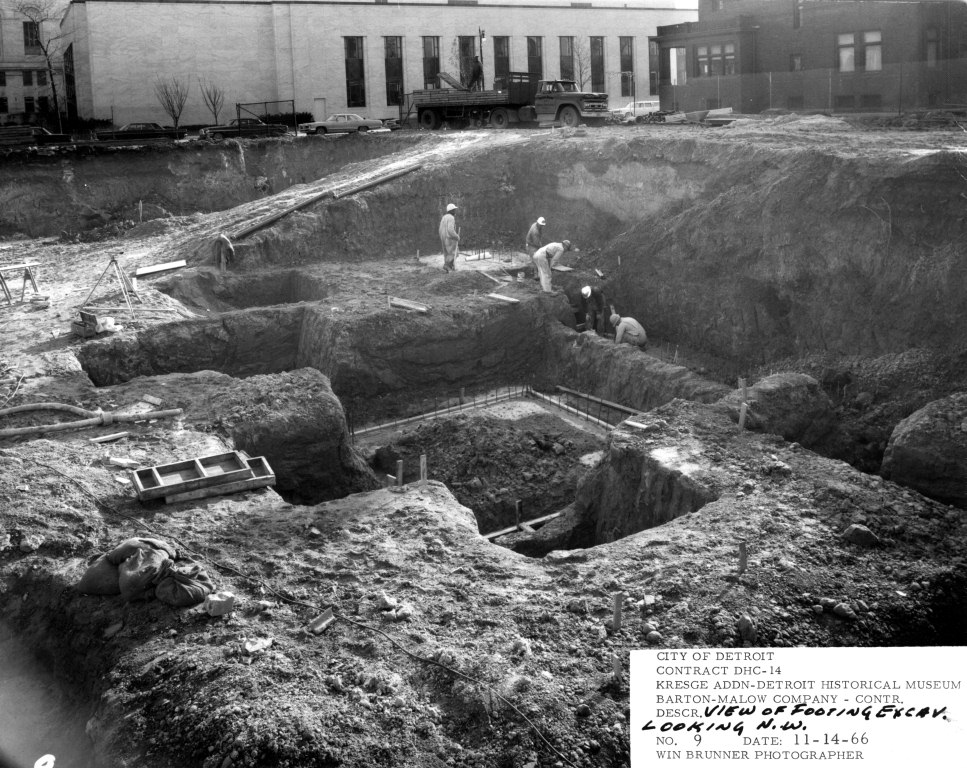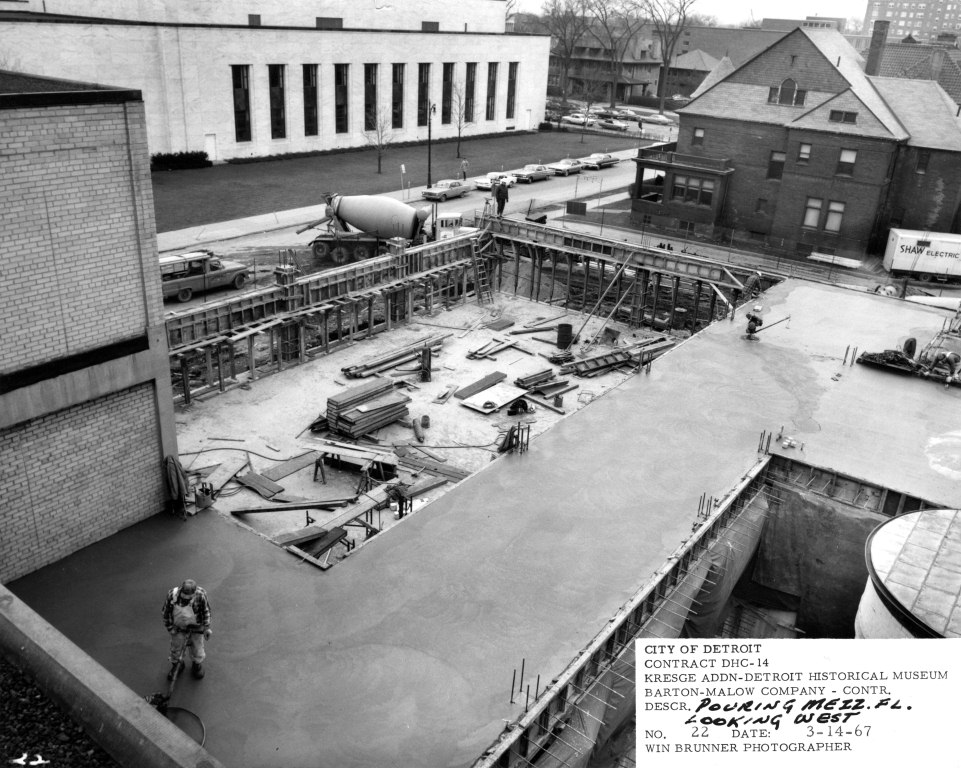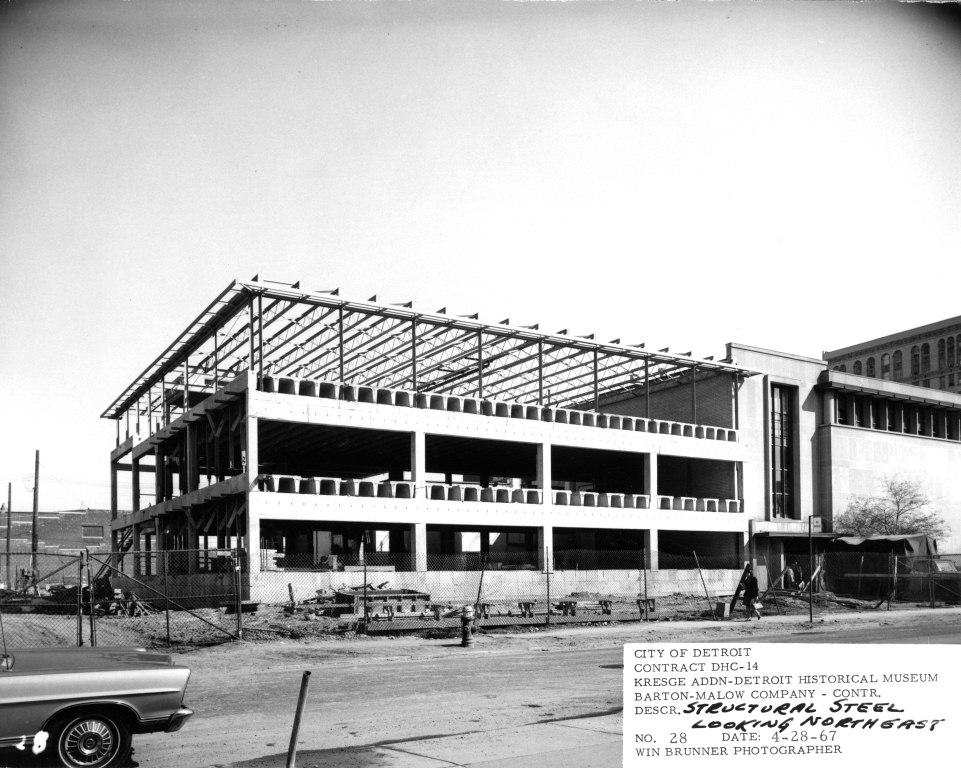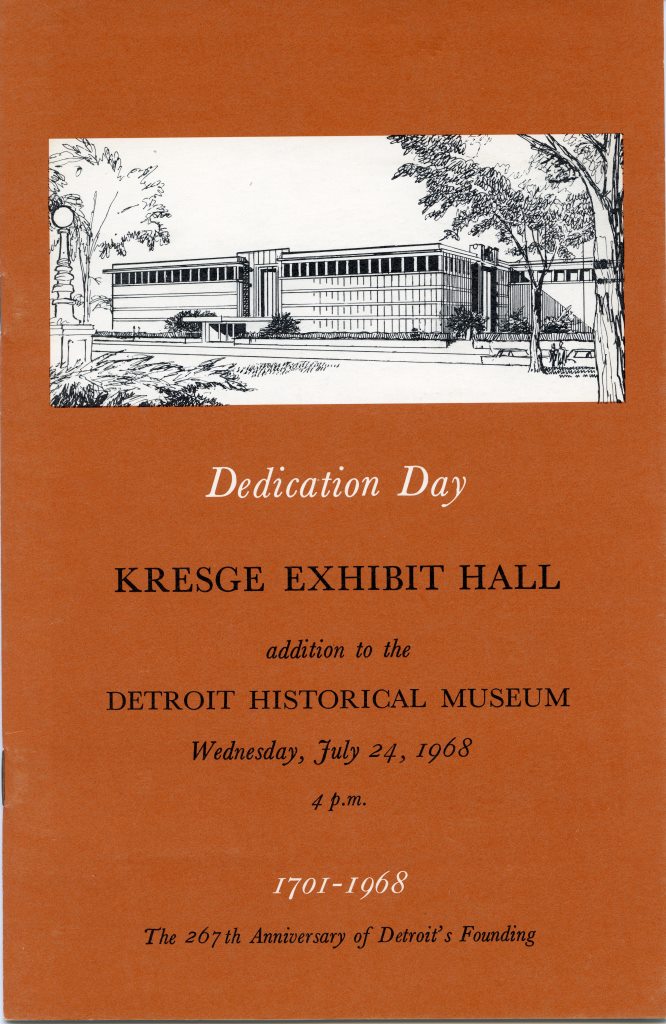The Other Half of the Story

Detroit has been a revolutionary and evolutionary city ever since Cadillac set foot on her shores back in 1701. Today’s modern structures populate a cultural landscape of industrial complexes, Victorian-era style homes, brick pavers, and church spires. However, have you ever wondered what came before or how something came to be? The Detroit Historical Museum stands on the northwest corner of W Kirby Street and Woodward Avenue. Once a thoroughfare of elaborate homes, this area is now the cultural center of the city.

Because of the seamless design, it may not obvious that the museum was built in two phases. The original portion, closer to Woodward, opened in 1951 as the first step towards a grander scheme. So how did it grow to its current size? In 1964, Stanley S. Kresge (son of Sebastian S. Kresge) pledged $500,000 for an addition after Detroit Historical Commission member Gordon Rice made the suggestion to his longtime friend. Originally, the plan was to build three additions down Kirby, from Woodward to Cass Avenue. Mayor Jerome Cavanagh and the City of Detroit matched Kresge’s pledge. The $1 million dollar gift allowed for expansion of the structure.

In 1966, the foundation was excavated and the new Kresge addition was underway. The architectural firm of Smith, Hinchman & Grylls, which had designed and built several Detroit landmarks including the Penobscot Building and J. L. Hudson Department Store, was hired to build an addition that matched the existing architecture by William E. Kapp. After two years, the addition was complete. On July 24, 1968, 17 years to-the-day of the original museum dedication and on the city’s 267th birthday, the addition was dedicated “to the enjoyment and enrichment of the citizens of the Detroit area, for the further appreciation of our heritage.” Today, the Kresge addition houses Wrigley Hall, the Louise Booth Auditorium, Booth-Wilkinson Gallery and the Frontiers to Factories and Doorway to Freedom exhibitions. You can see more images and artifacts from the Society, including more construction and dedication photographs in our online collection.



Left to right: Mr. Stanley S. Kresge, Mayor Jerome Cavanagh, Mr. Leonard N. Simons, and Mr. Gordon Rice.


